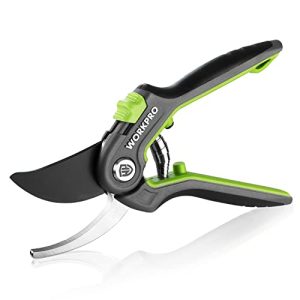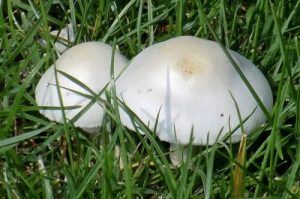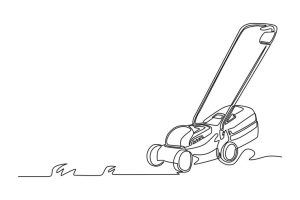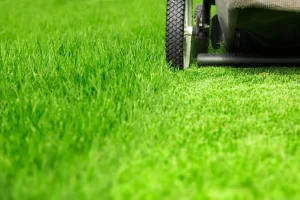Are you looking to attract a flurry of beautiful birds to your backyard? Hanging a suet bird feeder is a fantastic way to invite these feathered friends into your outdoor space.
But where exactly should you hang it to ensure the best birdwatching experience? Choosing the right spot can make all the difference, not only in the number of birds you see but in their safety and comfort as well. Imagine sipping your morning coffee while watching vibrant cardinals or cheeky chickadees flitting about, all thanks to the perfect placement of your suet feeder.
Intrigued? Let’s dive into the best strategies for hanging your suet bird feeder in a way that maximizes both your enjoyment and the birds’ well-being.
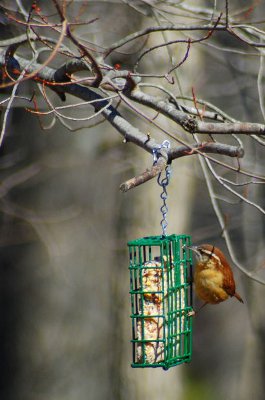
Choosing The Right Location
Selecting the perfect spot for your suet bird feeder enhances bird activity. Hang it near trees for natural shelter. Ensure visibility from your window for enjoyable birdwatching.
Choosing the right location to hang your suet bird feeder is crucial for attracting a variety of birds. The placement not only affects how many birds visit but also their safety and your viewing pleasure. A well-thought-out location will make bird watching a delightful experience right from your window.Proximity To Shelter
Birds need a safe place to retreat to after feeding. Position your suet feeder near trees or shrubs. This gives birds a quick escape route if they feel threatened. In my backyard, a feeder near the old oak tree sees more visitors. Birds love the security of the branches. They can dart back to safety in an instant.Away From Predators
Keeping feeders safe from predators is key. Cats, squirrels, and even larger birds can pose a threat. Hang your feeder at least 10 feet away from any potential jumping-off points. I learned this lesson the hard way. Placing a feeder too close to the fence turned it into a hunting ground for the neighbor’s cat. Ensuring a safe distance made a world of difference.Visibility For Bird Watching
You want to enjoy watching the birds just as much as they enjoy the feeder. Choose a spot that is easily visible from your favorite viewing area. A feeder visible from your kitchen window or living room can provide hours of entertainment. Imagine sipping your morning coffee while watching vibrant finches and chickadees flutter around. Wouldn’t that be a great start to your day? By considering these factors, you can create a bird-friendly haven that keeps your feathered friends returning time and again. Where will you hang your feeder?Optimal Height For Hanging
Hang suet bird feeders at a height that is safe from predators, around five to six feet off the ground. Ensure easy access for birds while keeping it away from squirrels. Position near shrubs or trees for bird shelter and protection.
Hanging a suet bird feeder at the right height can make a significant difference in attracting feathered friends to your backyard. It’s not just about visibility; it’s about making the suet accessible and safe for the birds. But how high is too high, and how low is too low? Let’s dive into the optimal height for hanging your suet bird feeder, ensuring you get the most out of your birdwatching experience.Accessibility For Birds
Birds need to reach your suet feeder with ease. If it’s too high, some smaller species may struggle to access it. Aim for a height between five to ten feet. This range is ideal for most birds, offering them easy access without stretching their limits. Having your feeder at this height can also help you observe various bird behaviors up close. Imagine sipping your morning coffee and witnessing a woodpecker’s intricate dance as it pecks away at the suet. Consider the type of birds you want to attract. If you’re hoping for a visit from the sparrows, a lower placement might be beneficial. On the other hand, higher placements can attract larger birds like blue jays.Safety From Ground Predators
Keeping your suet feeder out of reach from ground predators is crucial. Cats and raccoons are notorious for disrupting bird feeding. Hanging the feeder at least five feet off the ground helps deter these unwanted guests. While you can’t completely eliminate the risk, you can minimize it significantly with strategic placement. Have you ever noticed a squirrel eyeing your feeder with mischievous intent? Adjusting the height can turn them away. Consider adding a squirrel baffle above or below the feeder for added protection. This simple device can save you a lot of hassle and ensure the safety of your feathered visitors. Choosing the right height involves a balance between accessibility and safety. How will you adjust your feeder to create a welcoming yet secure environment for birds?Considerations For Different Seasons
Choose a sheltered spot for your suet bird feeder, especially during harsh winter conditions. In summer, find a shaded area to prevent suet from melting quickly. Make sure it’s easily visible for birds, yet safe from predators.
When it comes to attracting a variety of birds to your garden, a suet bird feeder can be a delightful addition. However, where you hang your feeder can significantly impact its success. Different seasons bring unique challenges and opportunities. Understanding these can help you create a welcoming environment for your feathered friends year-round.Winter Placement Tips
In winter, food sources become scarce, making your suet feeder a vital resource for birds. Place your feeder in a spot shielded from harsh winds. This will help birds conserve energy while they eat. Consider hanging the feeder near evergreen trees or shrubs. These provide natural shelter and a quick escape route from predators. I remember one winter when I moved my feeder closer to a pine tree. The number of visiting birds doubled almost overnight! Ensure the feeder is easily accessible. Snow and ice can create barriers, so clear a path if necessary. This small effort can make a big difference for hungry birds.Summer Shade Requirements
In the sweltering summer heat, suet can quickly spoil. To avoid this, hang your feeder in a shaded area. This will not only keep the suet fresh longer but also offer a cool spot for birds to rest. Look for places under large trees or near structures that provide consistent shade. Last summer, I noticed my feeder was melting too fast in direct sunlight. Moving it under a leafy maple tree kept the suet intact and the birds happy. Keep an eye on the temperature. If it’s particularly hot, consider using a suet alternative that withstands heat better. This proactive approach ensures you maintain a bird-friendly garden throughout the season. Have you noticed how different birds visit your feeder as the seasons change? Observing these patterns can be as rewarding as feeding them. Adjusting your feeder’s location based on seasonal needs invites a diverse range of species to your backyard.
Nearby Food And Water Sources
Creating a welcoming environment for birds involves considering nearby food and water sources. Birds are more likely to visit your suet feeder if they find other feeding and drinking options close by. This enhances their habitat, making it more attractive and sustainable for their needs.
Complementary Feeding Stations
Place seed feeders near the suet feeder. Birds enjoy variety in their diet. Seeds can draw different species, increasing your backyard’s biodiversity. Ensure feeders are visible but sheltered. This protects birds from predators while they eat. Arrange feeders at various heights. Different birds prefer different heights for feeding.
Water Access For Birds
Birds need fresh water daily. Position a bird bath close to your feeder. This provides birds with a reliable water source. Keep the water clean and fresh. Regular cleaning prevents disease spread among birds. Consider adding a fountain feature. Moving water attracts birds and keeps it clean. Ensure the bird bath is shallow. Birds prefer shallow water for easy access and safety.
Avoiding Common Mistakes
Hanging a suet bird feeder can be tricky. Birds need a safe spot. You want them visible but not at risk. Avoiding common mistakes ensures a successful setup. Consider placement carefully for best results.
Not Too Close To Windows
Placing feeders near windows can be dangerous. Birds might collide with glass. Reflections confuse them. Keep feeders at least three feet away. This distance offers safety. Birds can approach without danger.
Steering Clear Of Busy Areas
Busy areas are not ideal for feeders. Foot traffic might scare birds away. Noise can disrupt feeding. Choose quiet spots in your yard. Less activity means more bird visits. Allow birds to feed peacefully.

Adapting For Urban And Rural Settings
Choosing the right spot for a suet bird feeder enhances bird watching. In urban areas, hang feeders on balconies or window ledges. Rural settings offer trees or garden posts as ideal locations.
Adapting your suet bird feeder placement to suit your environment is crucial for attracting a variety of feathered friends. Whether you’re nestled in a bustling city or enjoying the tranquility of the countryside, your setting offers unique opportunities and challenges. By tailoring your approach, you can create an inviting haven for birds in any location.Urban Garden Strategies
In an urban setting, space might be limited, but creativity knows no bounds. Utilize balconies, terraces, or even window ledges to hang your suet bird feeder. Ensure it’s positioned where birds can easily access it without the interference of bustling human activity. Consider the height and visibility of your feeder. Hang it at eye level to avoid curious pets and give birds a safe vantage point. Use sturdy hooks or brackets that can withstand city winds and environmental elements. Think about the aesthetics of your urban garden. Choose feeders that complement your outdoor decor. This not only attracts birds but also adds charm to your living space. Have you ever noticed how a splash of nature brightens an urban view?Rural Landscape Considerations
In rural areas, you often have more freedom to experiment with placement. Use trees, fences, or garden poles to hang your suet bird feeder where birds frequently gather. The wider space allows for multiple feeders, attracting different bird species. Position your feeder near natural shelters like bushes or trees. This provides birds with a quick escape if predators appear. Also, ensure the feeder is far enough from the ground to deter ground-dwelling animals. Consider the natural elements that might affect your feeder. Wind, rain, and even the curious deer can impact its stability. Secure it firmly to withstand these rural challenges. Have you tried using a rustic, handmade feeder that blends seamlessly with the natural landscape? It can be a delightful addition to your garden. By adapting your strategy to your environment, you enhance the bird-watching experience, making it more rewarding for both you and the birds. How will you transform your space into a bird-friendly retreat?Enhancing Backyard Bird Habitat
Creating a welcoming habitat for birds enriches your backyard. Birds bring life, color, and joy to your garden. Hanging a suet bird feeder is just the start. To attract diverse bird species, enhance your outdoor space thoughtfully. Consider native plants and ensure a safe environment for feathered friends. These steps create a thriving sanctuary for birds to visit and flourish.
Incorporating Native Plants
Native plants suit local birds best. They provide essential food and shelter. Choose plants that offer seeds, berries, or nectar. Sunflowers, coneflowers, and elderberries are great options. These plants attract insects too, a natural food source for many birds. Native plants require less maintenance than non-native varieties. They adapt well to local climate and soil conditions. This helps support bird populations year-round.
Creating A Safe Environment
Safety is crucial for backyard birds. Keep feeders away from predators like cats. A good height for hanging feeders is 5-6 feet. Ensure there’s no easy access from trees or fences. Clean feeders regularly to prevent disease. Fresh water is another vital resource. Provide a birdbath or shallow dish with clean water. Change the water daily to keep it fresh and inviting. This safe haven encourages birds to return often.
Frequently Asked Questions
Where Should I Hang A Suet Feeder?
Hang the suet feeder near shrubs or trees for bird safety. Ensure it’s visible and accessible to birds. Keep it away from predators and sheltered from strong winds. Place it at least five feet above the ground to prevent pests.
Regularly clean the feeder to maintain hygiene and attract birds.
How High Off The Ground Should A Suet Feeder Be?
Hang a suet feeder 5 to 6 feet off the ground. This height deters predators and provides easy access for birds. Ensure it’s visible and accessible for optimal birdwatching.
How Do I Attract Birds To My Suet Feeder?
Place the suet feeder in a quiet area with nearby trees for shelter. Keep it clean and refill regularly. Use high-quality suet with seeds, nuts, or berries to attract various bird species. Add a water source nearby to enhance the appeal.
Ensure the feeder is visible and accessible to birds.
What Is The 5 7 9 Rule For Bird Feeders?
The 5-7-9 rule for bird feeders suggests placing feeders 5, 7, or 9 feet from a structure. This distance helps prevent predators from ambushing birds, offering them a safer feeding environment. Following this rule can enhance bird safety and encourage more birds to visit your feeder.
Conclusion
Choosing the right spot for your suet bird feeder matters. Birds need easy access and safety. Hang feeders away from predators and strong winds. Avoid direct sun to keep suet fresh. Near shrubs or trees offers hiding spots. Close to windows lets you enjoy the view.
Experiment with different spots. Adjust as needed. Watch for more birds visiting. Simple changes can attract new species. Enjoy the beauty and sounds of nature. Sharing food with birds is rewarding. It brings life to your backyard.


